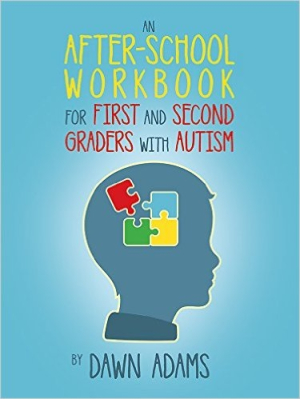An After-School Workbook for First and Second Graders with Autism
This workbook is filled with activities that can support the individual instruction of children with autism.
An After-School Workbook for First and Second Graders with Autism is an individualized, helpful resource that parents with children on the autism spectrum can use to supplement childhood learning.
The workbook draws from the author’s personal experiences, offering brief and helpful descriptions of special needs categories, including an overview of autism, a neurodevelopmental disorder. The author’s son, Billy, is autistic, and was educated in special needs classes that did not always provide him with enough time to learn.
The pace of Billy’s school lessons only increased as he progressed in school, though he was given little homework for reinforcement. Concerned, Adams began working with Billy at home. This creative workbook includes the activities that proved most successful in supporting Billy’s learning, incorporating a variety of content from topics including math, social studies, science, and literacy.
The exercises are divided by skills and topics such as spelling, citizenship, and national holidays. A particular focus on teaching children manners and self-care, such as how to put on clothing, showcases the workbook’s desire to provide a wide variety of life guidance and helpful hints.
Some worksheets, such as the one that asks children to count the eyes that appear on the page, seem engaging. However, some of the workbook’s pictures are harder to decipher than others. For instance, the two worksheets that ask children to decide if an item would sink or float include items that are not easy to identify. Perhaps labeling the pictures or encouraging parents to rely on images on a website would have been ideal, especially when children are expected to identify actual people like Neil Armstrong and George Washington, who appear sketched on worksheets with some biographical information.
The book includes little guidance on how to actually teach its lessons. It concludes with two short stories that stand alone in the text, without the benefit of directions or suggestions for what an adult might use them to teach. The lack of methodology fits uneasily with the book’s aims: to empower parents to work closely with their children so that they can impart the skills and lessons left underexplored during the school day. However, Adams’s lessons may inspire parents to create their own supplementary activities, tailored for their children’s particular interests and capabilities.
The concept of giving special needs children individualized attention has been extolled by activist Temple Grandin, who credits the regular work done with her childhood nanny with enhancing her social and cognitive development. An After-School Workbook for First and Second Graders with Autism is filled with activities that can support this type of individual instruction, as well as supportive insights about living with neurodevelopmental disorders.
Reviewed by
Kaavonia Hinton
Disclosure: This article is not an endorsement, but a review. The publisher of this book provided free copies of the book and paid a small fee to have their book reviewed by a professional reviewer. Foreword Reviews and Clarion Reviews make no guarantee that the publisher will receive a positive review. Foreword Magazine, Inc. is disclosing this in accordance with the Federal Trade Commission’s 16 CFR, Part 255.

